Standing on the beach with my paddle in one hand and the bow handle of my kayak in the other, I watch the waves and wait for a lull in the swell. When the last breaker crashes on the bar, I drag my boat through the shorebreak and hop in the seat, ready for some bluewater fishing. Paddle, paddle, paddle, through close calls and past harrowing moments before I’m out, beyond the breakers, in the ocean. What next? Will I catch a tuna, dolphin, wahoo, shark or something else? Will I encounter whales, porpoise, sea turtles, flying fish or some other strange creature? I dig my paddle into the deep blue and head towards the empty horizon, big fish and adventure.
6 Places to Paddle Past the Breakers & Catch Big Fish
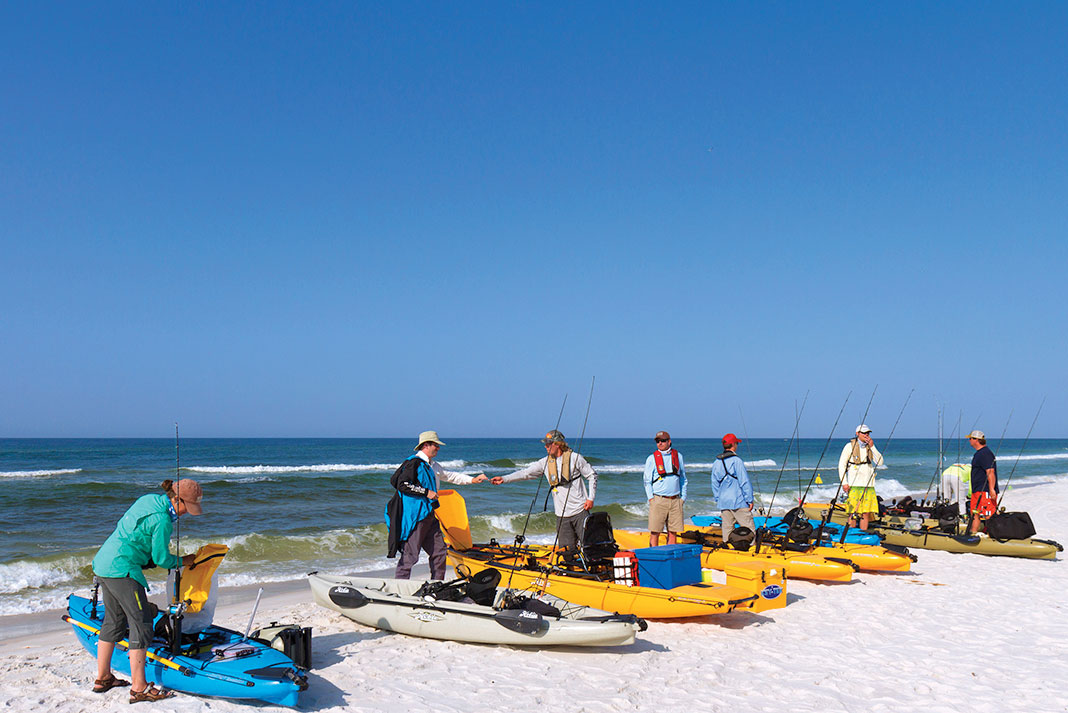
1 SoCal Soul
San Diego, California
Target: White seabass, yellowtail, marlin and sharks
Angler: Andy “Iceman” Allen
Local knowledge: Andy “Iceman” Allen, co-owner of OEX Sunset Beach paddle shop, says white seabass key in on squid. “Anytime the squid are around, the fish won’t be far away.” He looks for white seabass near kelp beds that border a deep canyon. Allen adds, “You can also catch them around barracuda and porpoise that are feeding on the flats.” He starts by catching live mackerel with a sabiki rig, then slow trolling the baits over structure and around kelp. Fresh squid makes a great white seabass bait, too. Yellowtail move up from Baja when the water temp hits 65 degrees Fahrenheit. To catch them, cast metal spoons, called irons, at yellowtails feeding under working birds or breezing on the surface. Between blitzes, Allen slow trolls live green backs and sardines along kelp beds and over drops and ridges.
Kayak: Hobie Revolution 13
Rods and Reels
Casting: Nine-foot jig stick and high-speed conventional reel, 40-pound monofilament.
Trolling: Seven-foot, 20- to 30-pound combo. “Use 65-pound braid to cut through the kelp,” Allen explains.
Rigs
Casting: Ten feet of 30-pound fluorocarbon leader, Salas 7X Iron.
Trolling: Carolina rig—one-ounce egg sinker, ball bearing swivel, four feet of 40-pound monofilament leader. White seabass: 3/0 “J” hook and large mackerel. Yellowtail: No. 2 hook for sardines, 2/0 hook for mackerel.
Don’t leave home without: A fish finder and GPS for marking bait and finding your way home in fog. Also important is a high-quality livewell with recirculating pump. “Don’t overload the livewell with baits,” Allen stresses.
Stay safe: “A hand-powered bilge pump will save the day if you take on water while launching.”
Pro tip: “Preparation is key,” says Allen. Use fresh line, retie knots and check drag. “Big fish will find any weakness.”
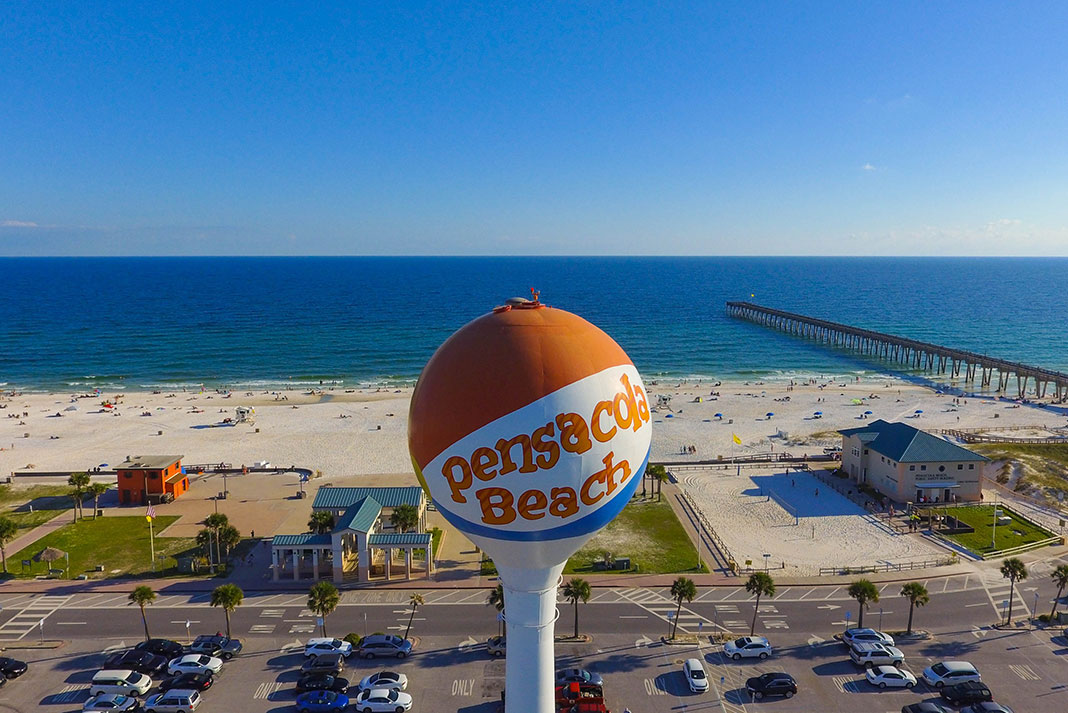
2 My Blue Heaven
Pensacola Beach, Florida
Target: King mackerel, tuna, sailfish, mahi, wahoo, snapper and grouper
Angler: Robert Long
Local knowledge: Off Pensacola, Florida, the Gulf of Mexico is deep and clear, drawing offshore species close to the beach. Robert Long, the host of the Rblong3 YouTube channel, says offshore fishing fires up in the spring when the water temperature hits 74 degrees Fahrenheit and stays strong through late fall. Cobia show up in March followed by mahi, tuna and kings. Red snapper season opens in May followed by grouper in June. Fall is the best time to score a sailfish and flounder hang on the reefs through the winter. To cover the most ground, Long slow trolls from one reef to another with live bait, which he catches behind the second bar with a sabiki rig. When he reaches the reef, he’ll drop a vertical jig or a natural bait for snapper, grouper and flounder.
Kayak: Hobie Pro Angler 14
Rods and Reels
Bottom fishing: Medium heavy jigging combo spooled with 65-pound braid.
Trolling: Medium action casting rod and reel filled with 30-pound braid.
Casting: Medium action spinning rod, 30-pound braid.
Rigs
Bottom fishing: Carolina rig—three-ounce egg sinker, two feet 60-pound fluorocarbon, 6/0 circle hook.
Vertical jigging: Three- to five-ounce Shimano Center Vortex jig in pink or blue.
Trolling: King rig—seven strand wire, No. 4 4X treble hooks, pink/blue/chartreuse duster.
Casting: Three feet of 40-pound fluorocarbon, two- to three-ounce Spro bucktail jig.
Don’t leave home without: High quality fish finder to locate structure and bait, and GPS to mark reefs. “We find a lot of structure while trolling around,” Long says. Carry live bait in a four-foot by two-inch PVC tube drilled full of small holes and plugged with end caps.
Launch sites: Download reef numbers at fishingdestinguide.com.
Stay safe: “In addition to a handheld VHF radio, I carry a personal locator beacon,” says Long. He often fishes two to three miles offshore. “I don’t carry a cellphone and VHFs aren’t reliable,” he says, “when I need help I want to be heard.”
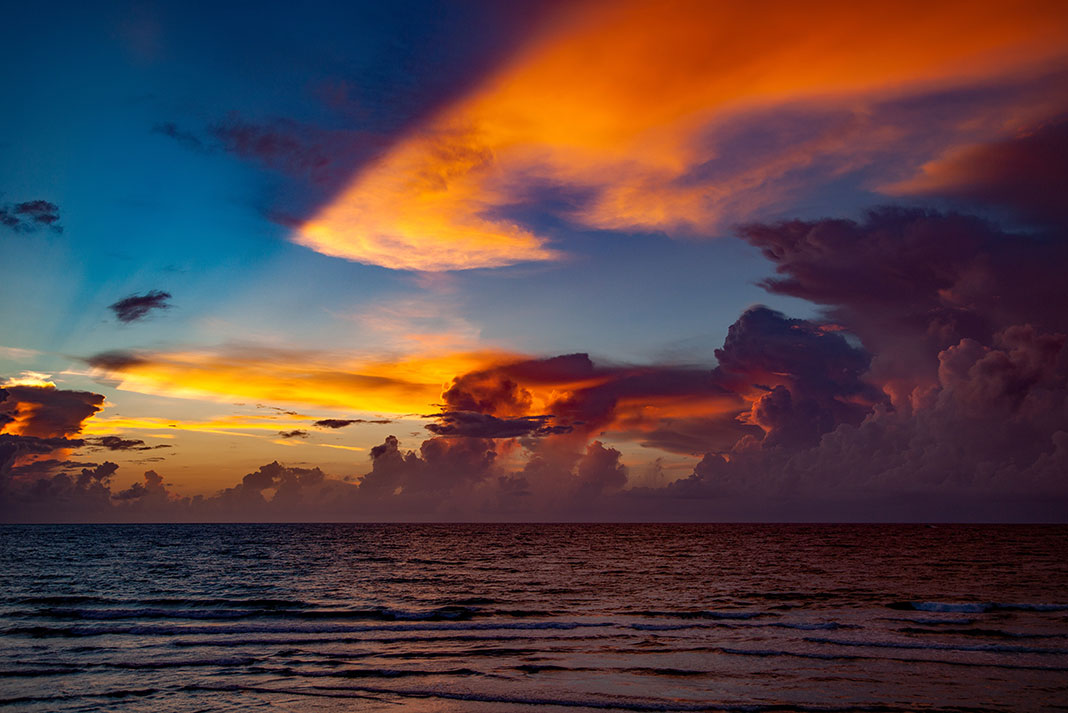
3 Extreme Team
Pompano Beach, Florida
Target: Sailfish, mahi, wahoo, king mackerel, tuna, amberjack and snapper
Angler: Joe Hector
Local knowledge: From May until July, tuna, kings and mahi hang out on the wrecks and reefs within a couple miles of Pompano Beach. Joe Hector, director of the Extreme Kayak Fishing Tournament series, says that mahi stick around all summer and wahoo show up in August. Winter months and early spring can be best for sailfish. Bottomfish are available year-round but recreational fishing seasons are only open for short windows of time. For the pelagics, anglers slow troll live baits on wire. To catch bottomfish, they drop live or dead baits to the reefs and wrecks. “We base our strategy on the current,” Hector says, “and try to drift over as many wrecks as possible.”
Kayak: Hobie Pro Angler 12
Rods and Reels
Trolling: Seven-foot, medium-heavy action spinning combo with 30-pound braid.
Bottom fishing: Medium-heavy spinning rod and 50-pound braided line.
Rigs
Trolling: Six feet of 50-pound monofilament or fluorocarbon, ball bearing swivel, No. 3 or 4 single-strand wire. Single hook: 4/0 circle. Stinger rig: two 4X No. 4 treble hooks. “When it is choppy, use heavier wire and leader,” Hector says, “on calm days use the lightest possible terminal tackle.”
Bottom fishing: Carolina Rig: Three- to four-ounce egg sinker, small swivel, 12 feet of 50-pound fluorocarbon leader, 4/0 to 3/0 circle hook. “Snapper are very smart,” Hector claims, “if they see the sinker they will spook.”
Don’t leave home without: “Live bait will survive in a five-gallon bucket with a battery powered aerator,” he says.
Launch sites: Start on 14th Street, Pompano Pier. “There’s plenty of parking and easy access right in the middle of the fishing grounds.”
Stay safe: “Be careful,” Hector says, “these fish will fight back.” Wahoo have razor sharp teeth. Pin fish (for bait) are armed with sharp gill plates and spiny fins. And a billfish has a lethal weapon attached to its face. “They’ll cut you if you’re not paying attention.”
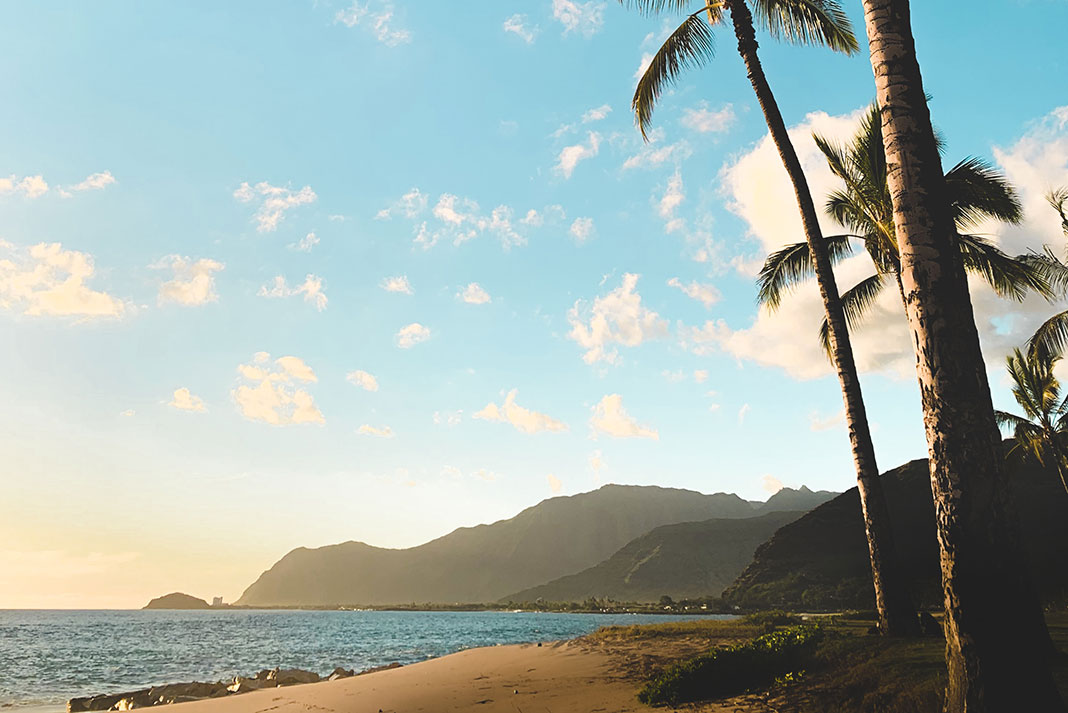
4 Island time
Oahu, Hawaii
Target: Tuna, wahoo, mahi and billfish
Angler: Robert “Aloha” Gannon
Local knowledge: Mahi show up in early spring followed by yellowfin tuna and blue marlin. “On the north side of the island, the wind averages 20 knots,” Gannon says, “but on the west side there is hardly any wind.” First priority is catching live bait. He fills his livewell by marking bait on his fish finder, then catching it with a sabiki rig. After his livewell is packed, he slow trolls over drops and ridges from 100 to over 1,000 feet of water.
Kayak: Ocean Kayak Trident 15
Rods and Reels
Gannon favors a six-foot, extra-heavy, stand-up rod and matching high-powered reel with 80-pound braided line.
Rigs
Thirty-foot topshot of 50- to 130-pound test fluorocarbon tied straight to 6/0 circle hook. For wahoo he advises adding a stinger rig to the leader with a two-foot length of 75-pound test titanium wire. For large baits, use a bridle rig.
Launch: Launch from any of the many beaches along the western shore. “The fish move from day to day,” he says. “I consider the moon, tide, currents and my personal fishing almanac to decide where to fish.”
Don’t leave home without: An anchor and 300 feet of anchor line. “Paddling back in, the last mile can be tough. I throw out the anchor and take a break.”
Stay safe: “Know your limitations,” Gannon says, “I’ve been paddling my hardest into the current and still moving backwards.” He warns that currents and winds can quickly carry an angler far off course.
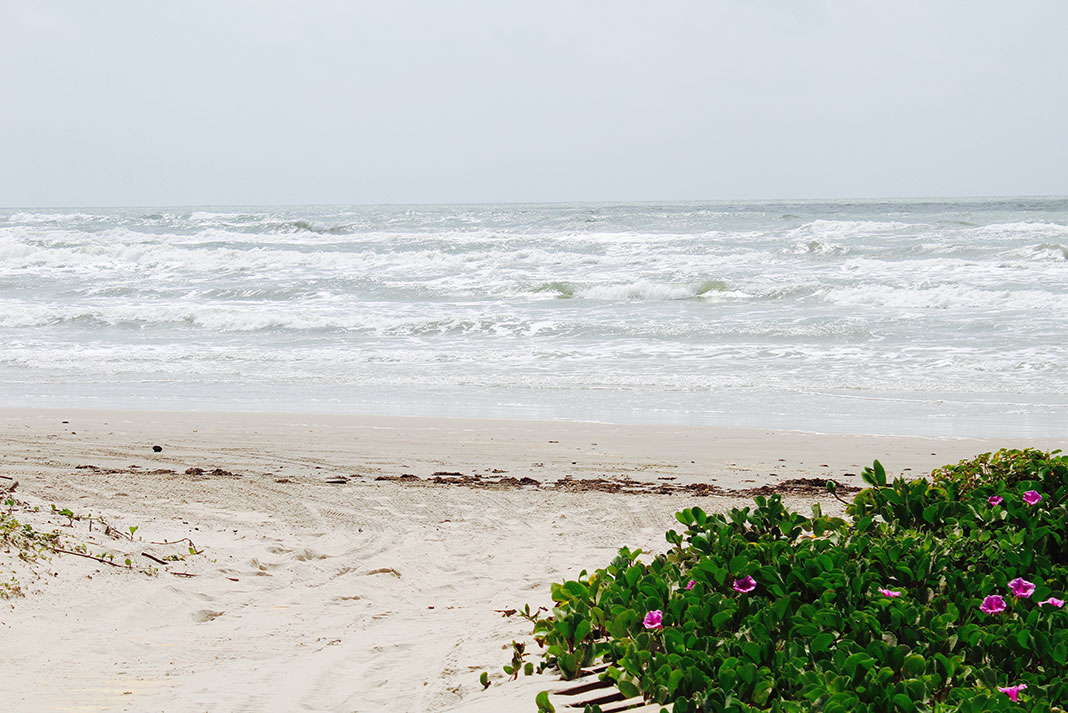
5 Wind on the Water
Corpus Christi, Texas
Target: Kings, cobia, tarpon, snapper, jacks, sharks, sailfish and bull reds
Angler: Ty Southerland
Local knowledge: “On the coast of Texas, we get wind and more wind,” says Ty Southerland, host of the blog 30milesout.com. The season starts in the spring when water temperatures hit the mid-70s but the wind subsides from mid-summer through October. Along the Coastal Bend, the water is deep and clear and there are many oil rigs near to shore. Southerland trolls diving plugs out to the rig, then anchors off and jigs the bottom while light lining a live bait.
Kayak: Hobie Outback
Rods and Reels
Bait catcher: Seven-foot, light-action spinning rod spooled with 10-pound braid.
Light lining baits: Medium-action conventional combo with 20-pound braid.
Heavy hitter: Seven-foot, heavy-action trolling rod with matching reel and 40-pound braid.
Rigs
Casting/jigging: Two-ounce jighead and six-inch curly tail, big topwater plugs.
Trolling: One-ounce Rat-L-Trap, three feet of single strand wire.
Live bait: 5/0 circle hook, three feet of single strand wire.
Bait: Sabiki rigs.
Don’t leave home without: A cooler bag. Fold it up and keep it in the front hatch when not in use. Unfold and open it to hold large fish. Frozen water bottles can keep the catch cold.
Launch sites: “We drive down the beach until we find a rig we want to fish.”
Stay safe: Leave a float plan with a responsible person listing where you will launch and fish and when you will return.
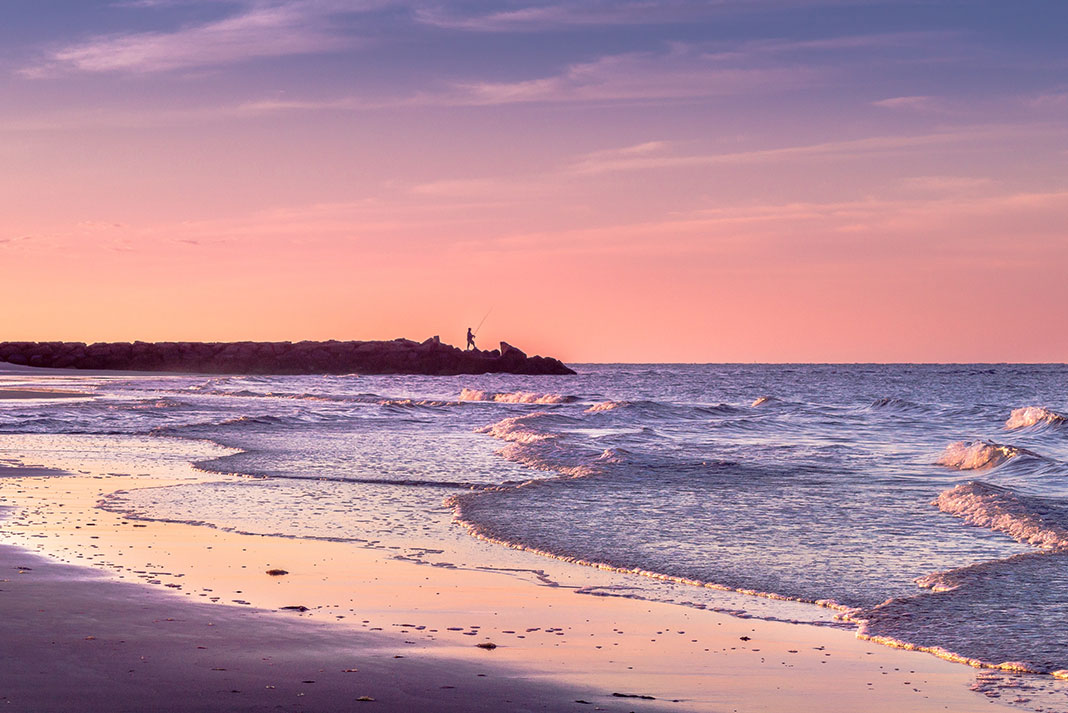
6 Bluefin Buster
Cape Cod, Massachusetts
Target: Bluefin tuna
Angler: Dave Lamoureux
Local knowledge: At the tip of Cape Cod, the bottom drops off and ocean currents carrying bait and bluefin tuna run close to shore. Dave Lamoureux, former world record holder for largest fish (157-pound bluefin) caught in a kayak, says the bite starts in June and the fish hang out through fall. “Mid-September through October is awesome,” he says. There is a launch at each end of the Cape Cod National Seashore and the fishing grounds are in the middle. Lamoureux plans his day to ride the current out to the fishing grounds, fish through slack tide, and then ride the opposite tide back to the launch. “Bluefin bite best at slack tide,” Lamoureux says. He trolls naked horse ballyhoo with heavy tackle, but hooking the fish is only half the battle. “Fighting and landing one of these monsters takes everything you’ve got,” Lamoureux says.
Kayak: Liquidlogic Mist
Rods and Reels
Seven-foot, heavy-action spinning rod and matching spinning reel with 100-pound test braided line. “I’ve developed a titanium rod and reel to battle these fish,” says Lamoureux. Check it out at fortitudefishing.com.
Rigs
Horse ballyhoo rigged on 9/0 J-hook. 12 feet of 130-pound leader. 50-foot top shot of 100-pound mono.
Don’t leave home without: Single-handed harpoon attached with rope to poly balls. “When the fish gets close, hit it with the harpoon and then let it tow the poly balls.”
Stay safe: “I bring dive fins so I can swim back to the beach if I should lose my kayak,” says Lamoureux.
Find the best destinations for paddle-out bluewater fishing. | Feature photo: Courtesy Jeffrey Fortuna/Hobie Kayaks

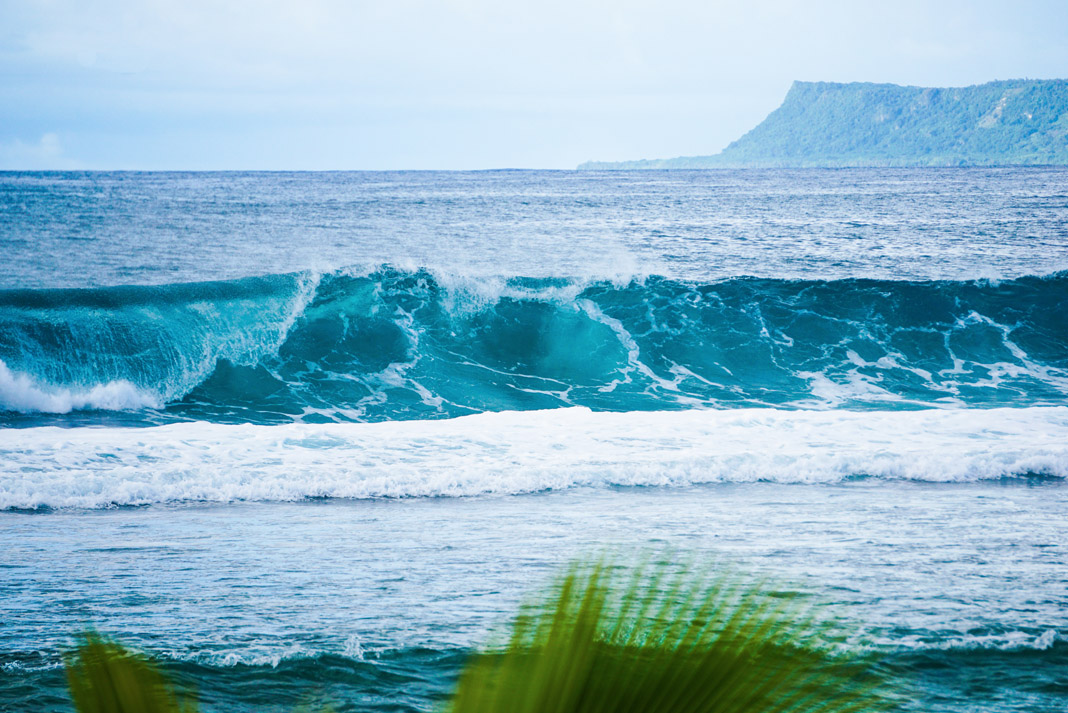
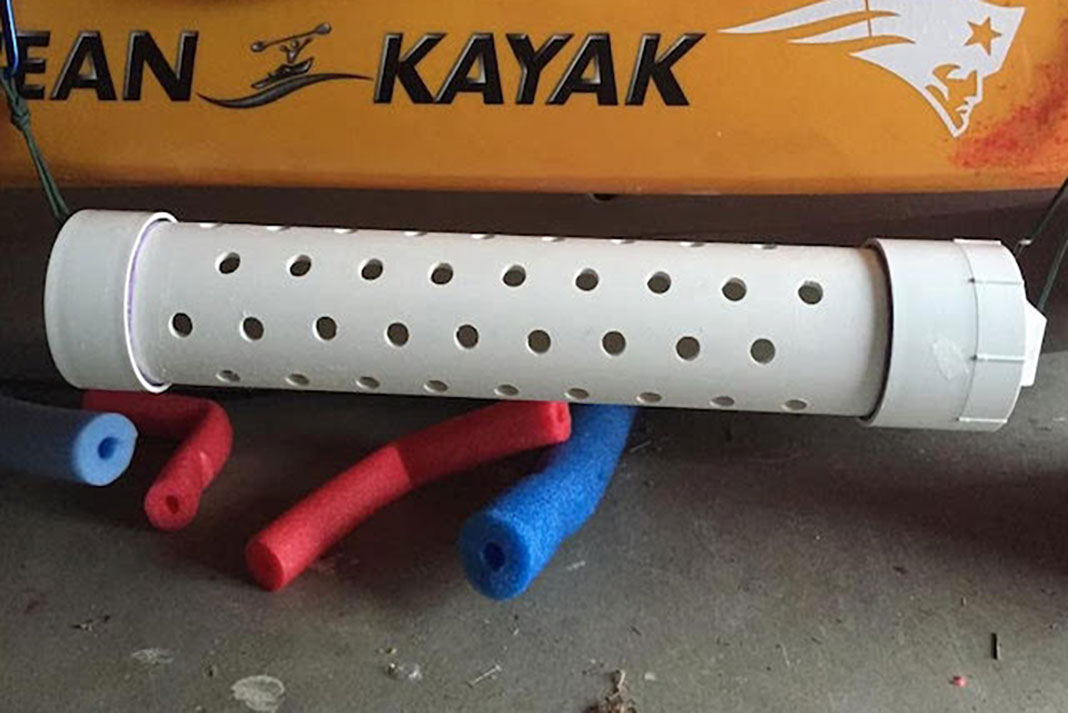
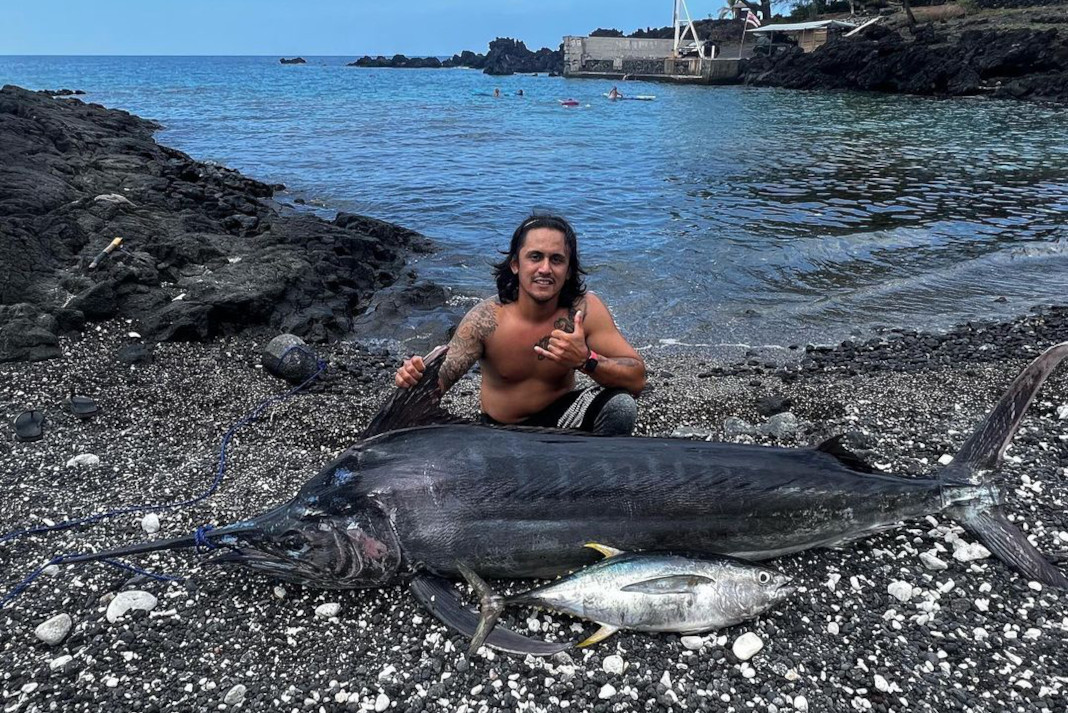
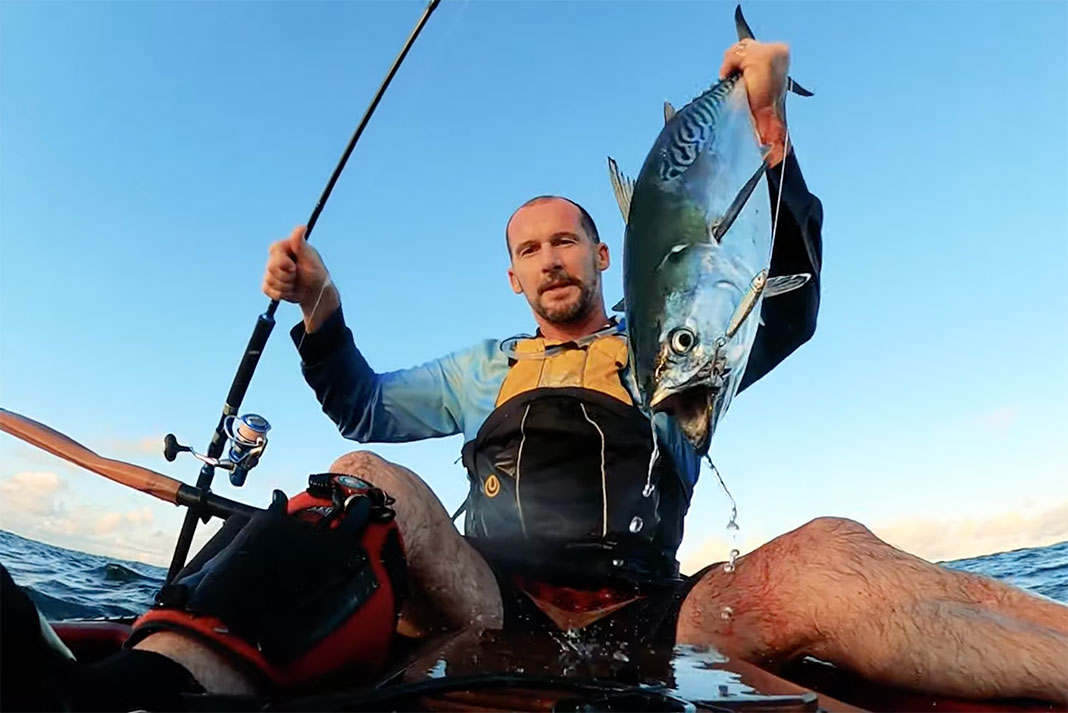
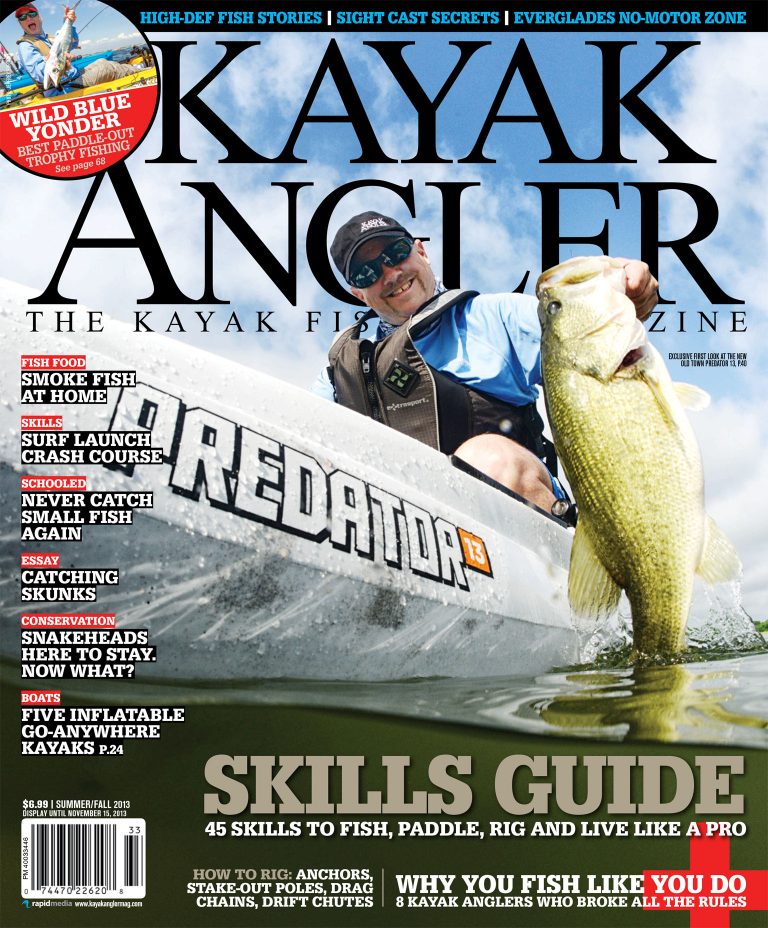
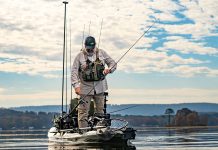
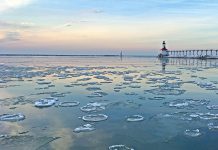
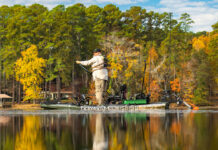
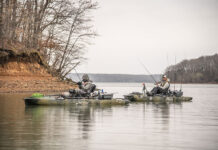
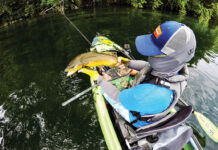

I’d like to add North Padre Island in Texas to this list. You can get into lots of Kings, Snapper, Shark, and even an occasional Sailfish.